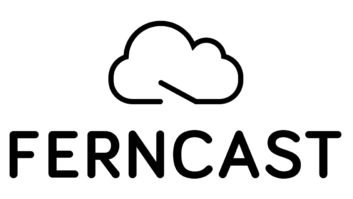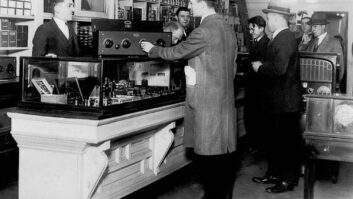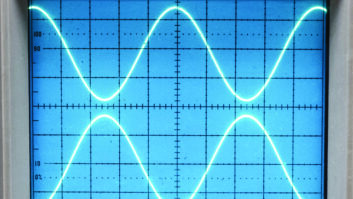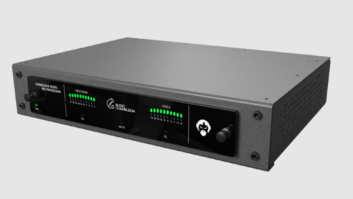MADISON, Wis. — The tradition among broadcaster is to have a lot of wires in the walls.

A few years ago, WSUM, the University of Wisconsin’s student FM station, finally gained a new permanent home on the campus after near a decade of residence in off-campus studios.
In a multi-studio facility, it is a useful thing to have all audio available everywhere, so “more wires,” right? Not with Axia Audio’s Livewire IP technology network.
IP audio
Axia Audio has a line of consoles called Element which transport their audio via Livewire’s audio over IP technology. The concept is to convert the audio to a multicast IP stream and move it to and from the network when the audio is created or required.
At WSUM, Axia’s Livewire IP technology creates a core audio plant on economy of scale network switches supplied and managed 24/7 by the UW’s Department of Information Technology.
The combination of additional network switch capacity, a private VLAN exclusively for audio streams, and extra Cat-6 cable installed (which made the architects much happier than holes in walls) has resulted in a diverse and expandable facility for the students of the university.
A properly configured Livewire network can encode, deliver and decode audio faster than the air can move the vibration. This makes all audio available in all places; and because the audio is multicast, distribution amps will never be needed. The network switches just deliver the information to all devices where the audio is assigned. This has another nice side effect, allowing all consoles to move the DSP they require to an external box located somewhere other than a nice, quiet studio.
WSUM’s new facility has an Axia Element console in the main studio serving the FM and our Web stream.
The main studio sits suspended four stories over the University of Wisconsin’s east campus corridor and boasts four guest positions, each with a control panel, a host position and a turntablist workstation with a Rane TTM57 digital crossfade mixer and turntables. The host has access to a pair of production CD players, a pair of DJ CD players, MiniDisc, cassette, CF recorder, two directly tied and automated turntables and a custom panel with ins and outs via XLR, RCA, 1/8-inch, 75 ohm AES, 110 ohm AES and a USB interface for computers or things like handheld recorders.
The custom 1RU I/O panel also contains a USB connection to the dual-monitor host computer with Axia’s IP-Audio Driver software, which sends audio to the network over Ethernet, replacing the need for PC sound cards.
Also part of the WSUM facility is a news booth with visual access to the main studio with another Axia Element console. A production studio with the same capability as the main studio is driven by an Element console. The facility also has three breakout rooms with Radio Systems Millenium Livewire consoles.
Finally, a live production studio contains a Yamaha M7-CL48 console. This has a 16-channel in/out AES card directly wired to an eight stereo-channel Axia AES/EBU Digital Audio Node for network input and output. The studio’s computer also has Axia’s multi-channel audio driver, which brings multiple pairs of Livewire I/O right to an ASIO driver in Windows 7.
The choice to use IP audio at WSUM has had a significant impact on the functionality and diversity of the studios. As a facility designed to be a learning lab as well as a broadcast studio, access to “all audio everywhere” is essential. In just two years, this student organization has grown to serve on average approximately 200 students and community members who participate with the broadcast or production.
All of this has been done without poking any holes in the walls.
Matt Rockwell is chief engineer for WSUM(FM).
For information, contact Clark Novak at Axia Audio in Ohio at (216) 241-7225 or visit www.axiaaudio.com.












